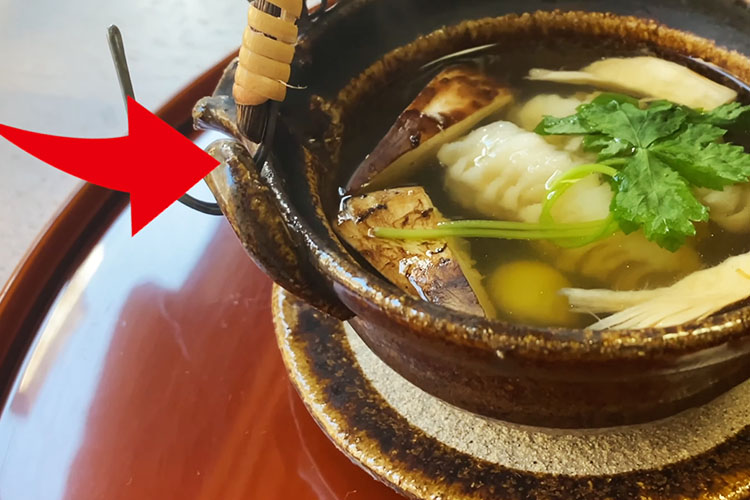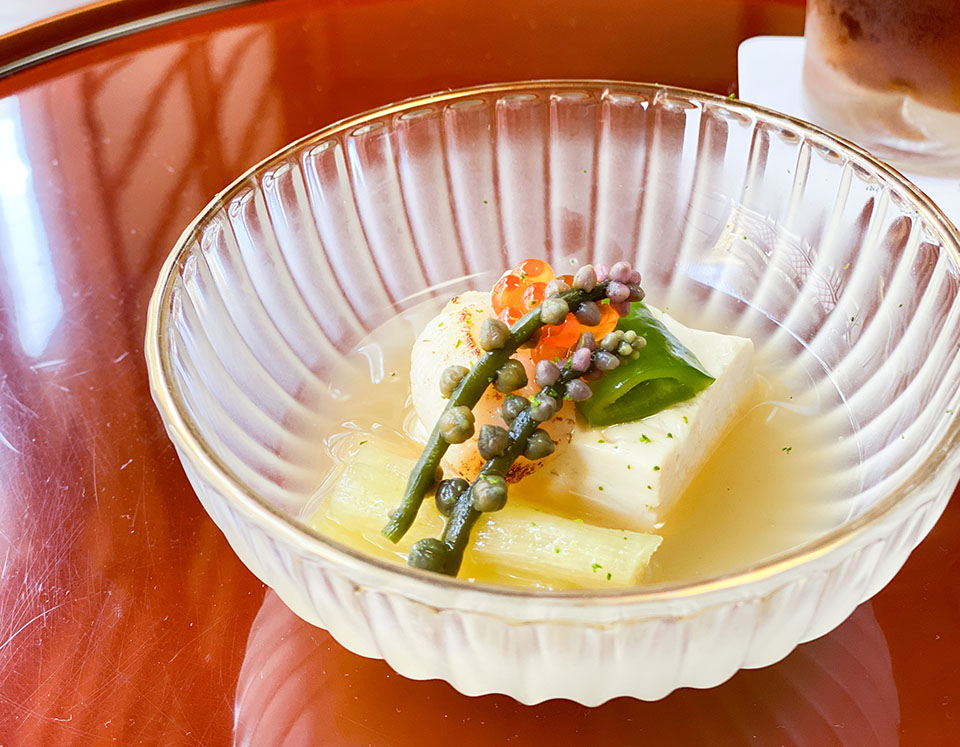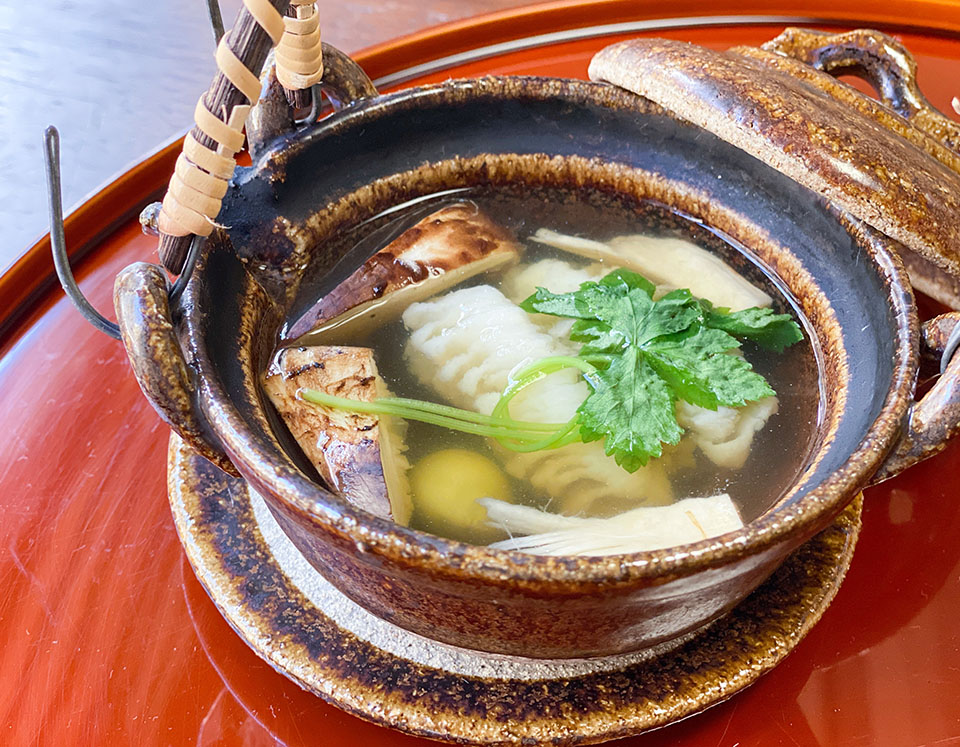In this installment, we put the methods of deliciously photographing Japanese cuisine with a smartphone, which we have introduced so far, into practice with actual Kaiseki cuisine. We carefully photographed each course dish and will introduce techniques to maximize its appeal.
Differences Between Kaiseki and Cha-kaiseki Cuisine
Both Kaiseki and Cha-kaiseki are traditional Japanese multi-course cooking styles, but they have some differences.
Kaiseki cuisine features lavish and vibrant dishes using an abundance of seasonal ingredients and is often served at hospitality events and banquets.
On the other hand, Cha-kaiseki cuisine, originally developed from light meals served at tea ceremonies, is characterized by its simple yet delicate flavors and meticulous presentation.
Both styles of cuisine allow you to experience Japan’s beautiful seasons through their dishes.
[Appetizer] Soy milk sesame tofu, grilled Manganji peppers, salmon roe, shrimp in sweet vinegar, grilled shiitake, green yuzu, umami dashi.
Sakizuke is a dish served at the beginning of a Kaiseki meal in Japanese cuisine. Similar to an appetizer, it features small dishes made with seasonal ingredients, intended to stimulate the palate before the meal begins.
The fundamental techniques for photographing any dish remain the same:
- Determine the front of the dish.
- Check the direction of the light.
- Explore different angles.
- Decide on the composition and framing.
- Focus accurately.
- Adjust brightness with exposure compensation using the sun mark.
Adjusting these steps (1-6) according to the characteristics of each dish is the optimal way to capture delicious-looking photos.

For Sakizuke, after removing the accompanying spoon and considering the height of the dish, setting the angle to about 45 degrees highlighted the ingredients, enabling the capture of a beautiful photo.
Once the angle is determined, further enhancing the composition and framing will enable even better photography.
[Soup] Pike conger, matsutake mushrooms, dobin mushi (steamed in a teapot), ginkgo, mitsuba, sudachi.
Wanmono refers to soup dishes. The ingredients and shapes chosen for Wanmono reflect the changing seasons and events, providing a calming transition within the progression of the meal and facilitating a smooth shift to the next dish.
For this Dobin-mushi, the pot has a long handle. If you try to include the entire handle in the composition, the dish itself may not stand out, so consider framing with the intention to cut it off in the final image.



Rotate the handle and adjust the placement so that the ingredients are illuminated as much as possible, and take photos while also making use of items like the lid.
[Sashimi] 4 kinds assortment: shrimp, squid, yellowtail, tuna.
Sashimi is incredibly popular in Japanese cuisine, known as a dish where you can enjoy the freshness and intrinsic flavors of the ingredients. The presentation is also thoughtfully arranged, often adorned with seasonal flowers and leaves to provide visual enjoyment.
Please refer to the article ‘Three Types of Sashimi‘ for the differences between sashimi and sashimi.
The sashimi this time is served in a splendid dish, so in order to take a photo that also takes advantage of that, we will try a bold framing.








